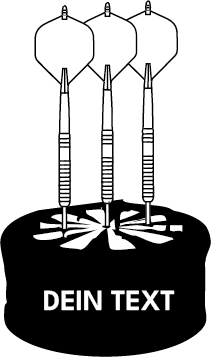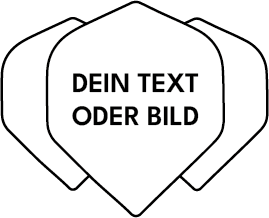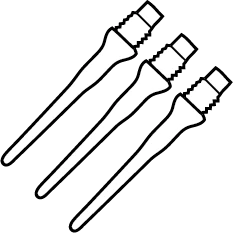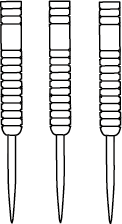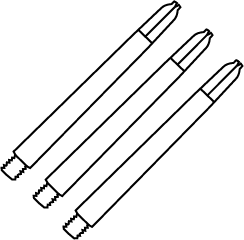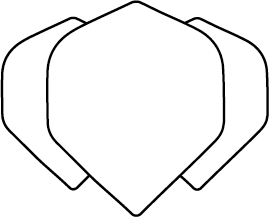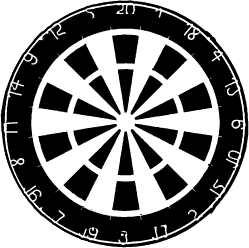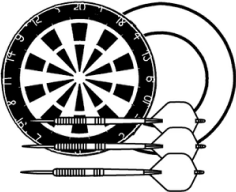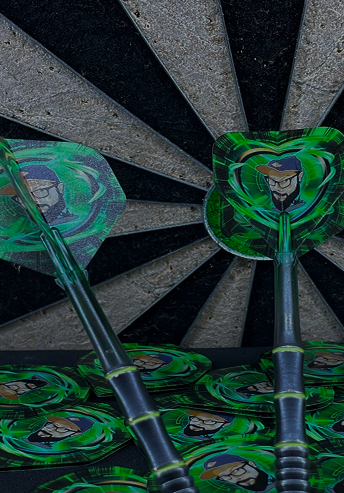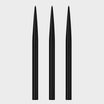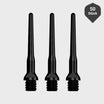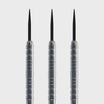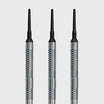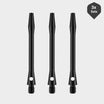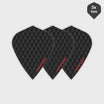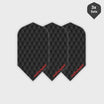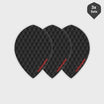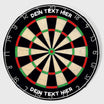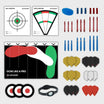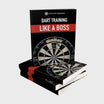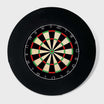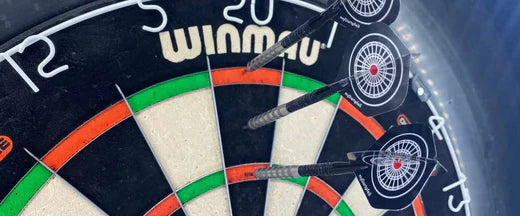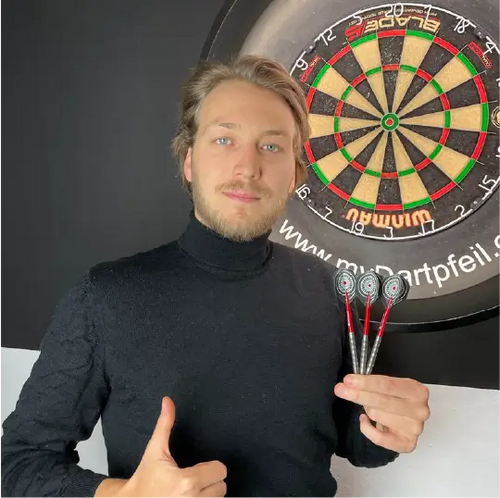In darts there is a golden saying: Triple is funny, but double makes money .
How true this saying is, especially among professionals, is demonstrated week after week in major tournaments with huge prize money. Darts checkouts – also known as finishes – are therefore an essential part of every professional's tactics .
Time and again, you see pros using the same dart checkout methods to finish a leg. In this blog post, we explain why this is the case and which dart checkout methods are particularly popular among the pros.
What are checkout paths?
Checkout ways are all numbers in the classic dart game 501 Double Out that can be brought to zero with three darts. As soon as this possibility of a high finish dart exists, it is called In darts jargon , a checkout is often used as a synonym for a finish that a player leaves standing. A short example that perfectly serves to clarify the point.
The highest checkout in darts is exactly 170 points (T20, T20, Bull). 169, although lower, cannot be "checked out"—or brought down to zero—by any combination of three darts on the dartboard followed by a final throw for a double. Below 170, there are exactly seven of these numbers that cannot be played down to zero with three darts. This is referred to as a bogey number.
Especially for beginners, it's recommended not only to practice dart throwing technique , but also to hang a darts checkout chart next to the dartboard . This chart lists all the sensible ways to checkout from 170 upwards.
This way, you can learn and remember all the darts checkout methods quite quickly. You'll see that in just a few weeks, you'll have the darts scoring table memorized. We've even published a darts checkout table ourselves, which is easy to print out. You can also create a darts tournament schedule right away so you always have everything at your fingertips.
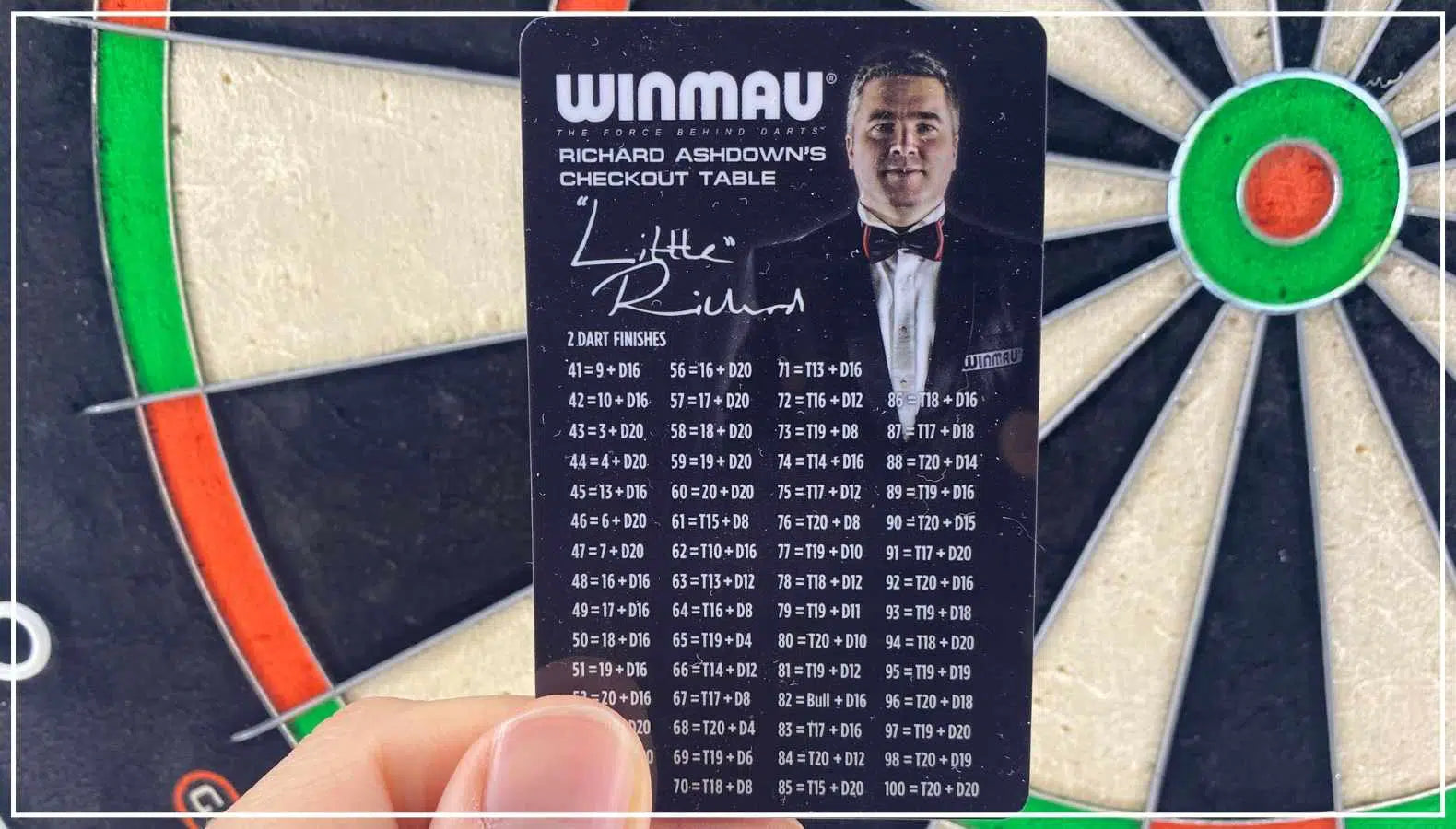
At what point does a professional start calculating to face a certain dart checkout?
The leg starts at 501 and is played down to zero – at least that's how it works in professional darts with the PDC. Especially when a lot of money is at stake, it's important to keep every option open to finish a leg. Therefore, many players are asking themselves:
At what point do the pros actually start calculating to be able to set a finish? The magic threshold is 350. Starting with 350 points remaining, players try to put themselves in the best possible starting position to finish a leg.
Why the 350? The answer is simple: If you shoot the highest possible shot with 350 remaining and score 180, the highest possible checkout will end up being 170. This leaves you with the option of finishing the game with a 170 finish, in the best-case scenario. Admittedly, this is relatively unlikely even for professionals, but the following still applies: If you don't have the opportunity to do so, you have no chance of finishing a leg. If you at least position yourself so that it's mathematically possible to check, you significantly increase your chances. Simple probability calculation.
Tactics with checkout paths – keep an option open
Darts is also a game of tactics. It's not uncommon for players to get so caught up in the tunnel that they don't do the math and suddenly end up with a bogey number— one of the seven numbers below 170 that can't be checked.
Therefore, as mentioned in the previous chapter, it's especially important to start calculating early . But that's not all. Aiming with darts is also important. Only then will you be in control of your finish and be able to defeat your opponents.
Professional players aim to set themselves the exact same checkout paths for a finish as often as possible . This also means that players should set a checkout darts pattern that allows, for example, a single hit in the triple to finish the leg. Here's an example of exactly what we mean:
- With 130 points remaining, the player still has the opportunity to end the leg with just one hit in the triple (20, T20, Bull).
- Even if the optimal path would be T20, T20, D5, the player keeps the option open to continue checking if he only hits the single 20 with the first arrow.
- From 131 points onwards, this advantage disappears (with the exception of 132).
- At 131 points, it's already mandatory to hit two triples to finish a leg. Therefore, 130 is considered a popular threshold, and one you should always keep in mind when checking your chances of winning a leg.
Note: This is why it's important to memorize the darts checkout chart and recite it in your sleep. Only then will you know exactly how to quickly reach your finish.
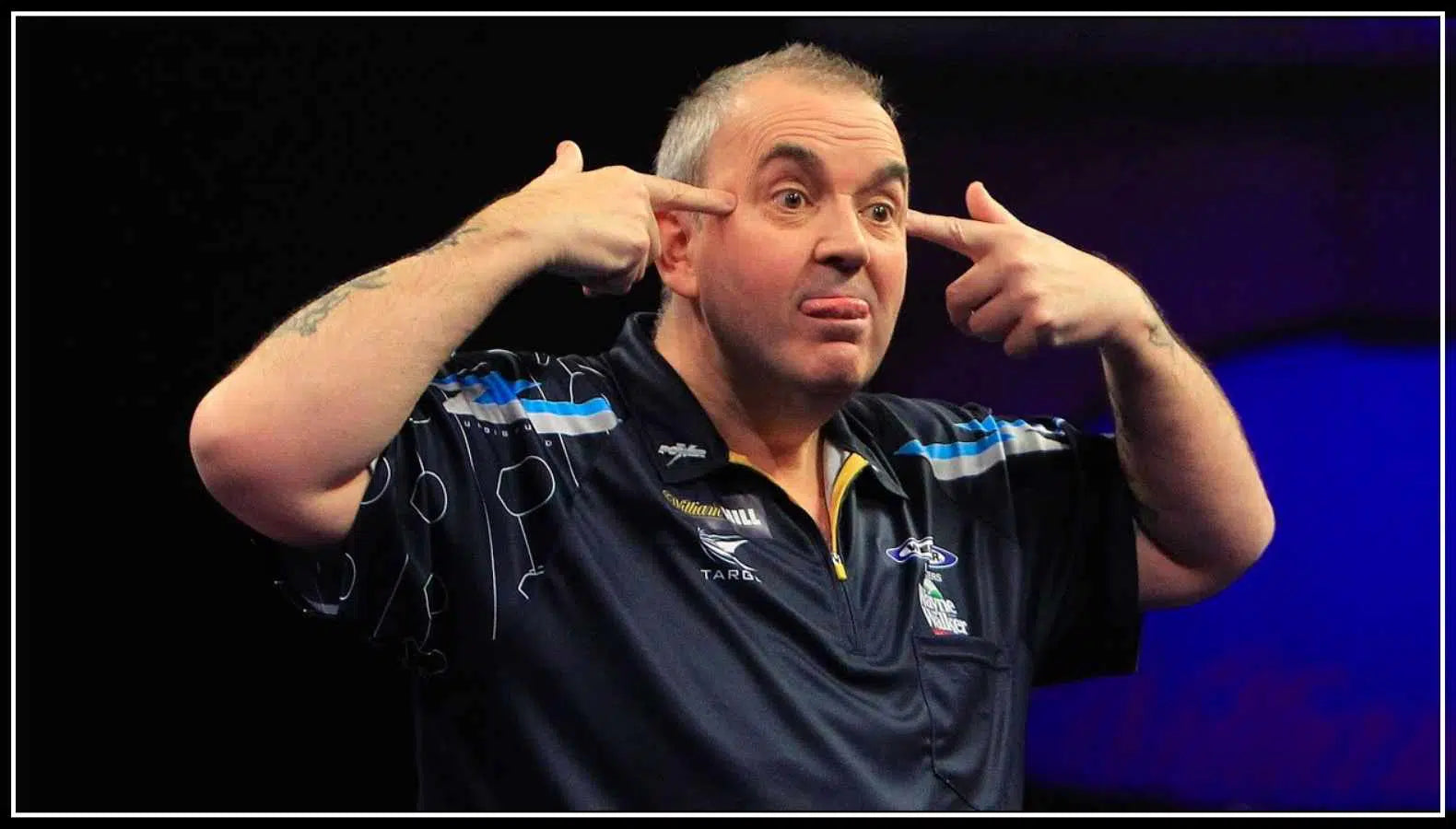
Which dart checkouts do the pros ask themselves most often – an overview
Below, we'll take a closer look at a few dart checkouts and explain why pros consistently leave the bogey numbers on their darts. This way, no dart questions remain unanswered.
- 170 : As the highest finish, it always makes sense to aim for 170 instead of leaving a bogey number.
- 164 : The 164 is so popular because, like the 170, it's possible to finish a leg with two hits on the same treble and the bullseye. By comparison, the 167 is considered a much more difficult finish to play, as it requires the player to switch from the T20 to the T19.
- 150 : The 150 can be played in many different ways, which is why it's also considered a popular checkout. Whether it's completely on the bullseye, on the T20, or on the T19, the number 150 can be played in many different ways.
- 132 : The 132 has a very special appeal. It can ultimately be checked without any triples. Two bulls and the final D16 bring 132 points to 0. Even if the first dart lands on the single bull, there's still the option to check via the T19 and bullseye.
- 124 : The 124 is listed here as a placeholder for a whole range of finishes (121-130). These numbers are so popular because they can be checked with a triple. Using the 124 as an example, it looks like this: The favored path might be T20, T14, D11. If the first dart misses, the path changes to 20, T18, Bull. If the second dart misses, the path is again T20, 14, Bull.
- 64 : The 64 is so popular because it can be checked using the numbers 8 and 16, which are known to be adjacent on the board. Be it 16, 16, D16 or 16, 8, D20. A very popular finish among beginners, as it forgives a missed throw into the adjacent square.
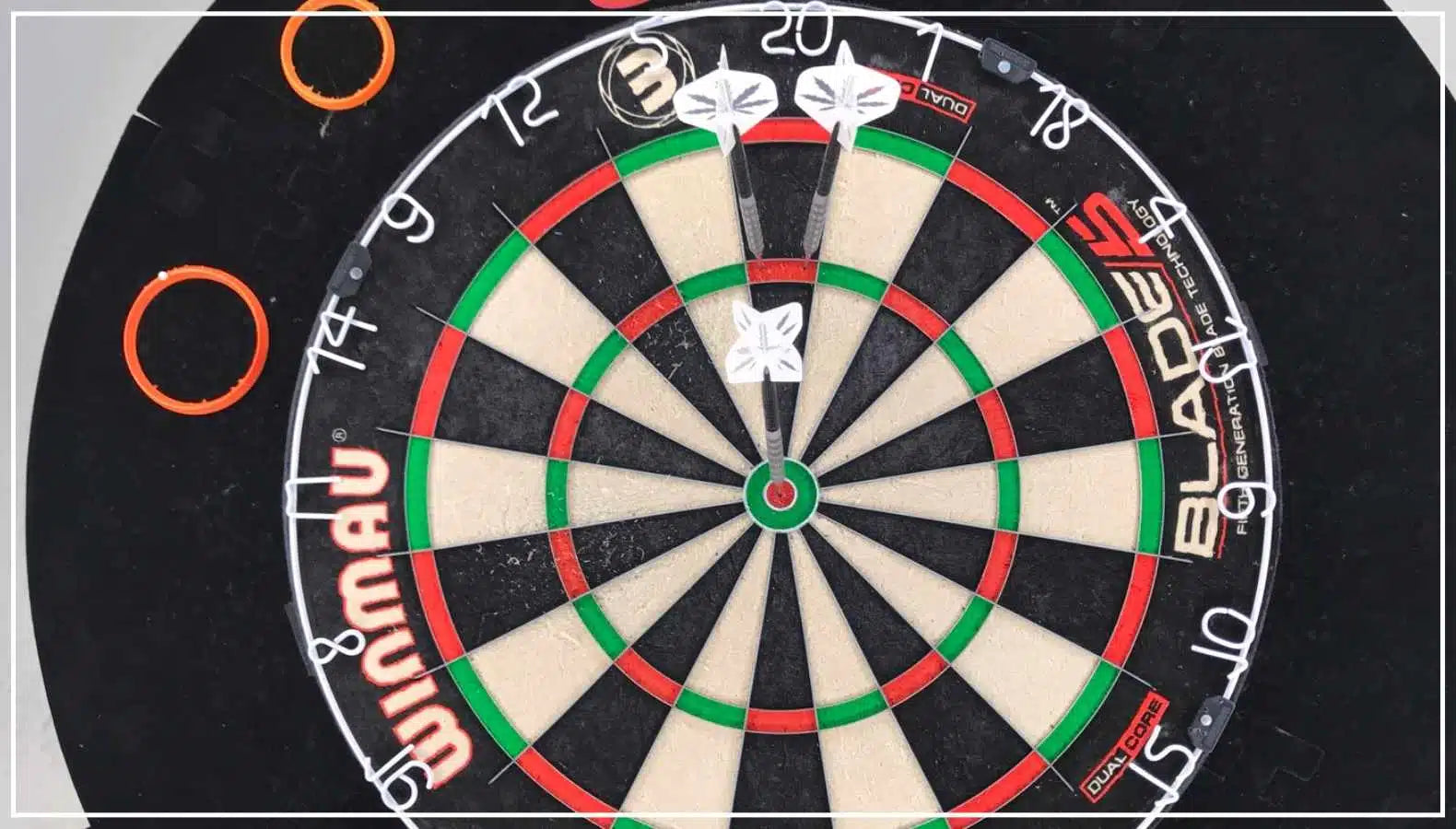
Why do dart players often choose the same checkout routes?
This is about routine. Dart players try to develop a routine that makes it significantly easier to play certain strokes over and over again. Ultimately, it's about security and confidence in your own game.
It is not for nothing that many professionals have a favorite double and try to set up higher dart checkouts so that they can bring them to zero by throwing on the favorite double field.
While James Wade and Michael Smith favor the D10, Mensur Suljovic prefers the D14. Phil Taylor, on the other hand, has never been dissuaded from playing the D16.
Learn the best techniques and proven tips that will make you a darts champion. Click here and start your journey to dartboard perfection!
- Are you finally ready to start playing darts? Then check out how to hang up the dartboard so that everything complies with the rules.
- Warm up like a pro before darts: You'll find tried-and-tested tips and exercises only here. Click in now and warm up!
- The Art of Tournament Planning : Learn how to organize professional darts tournaments in our guide. Includes tips from the pros!
- Dart counter : We'll tell you which dart calculator is best. Scoreboard, calculator & app in the showdown. Click in now and find out!
Conclusion
Even if you're a complete novice to darts, you'll quickly figure out which checkouts work best for you when finishing . Practice is, of course, key to hitting the numbers exactly as you envision them. You can memorize the different checkouts right from the start and always do the math when you're throwing.
This way, you'll not only train your ability to hit what you want, but also your mental arithmetic . This is especially important in darts , allowing you to check out in as few throws as possible . If you always do the math, you'll quickly know which finish to make and have control over your game.
To start with, it's a good idea to hang the chart with the important checkouts next to your board so you always have an overview of the possible finishes. You'll see that in just a few weeks, they'll become second nature to you.
And here is the table for you to print out:
| points | 1. Dart | 2. Dart | 3. Dart | points | 1. Dart | 2. Dart | 3. Dart |
| 170 | T20 | T20 | DB | 99 | T19 | S10 | D16 |
| 167 | T20 | T19 | DB | T19 | S6 | D18 | |
| 164 | T20 | T18 | DB | 98 | T20 | D19 | - |
| T19 | T19 | DB | 97 | T19 | D20 | - | |
| 161 | T20 | T17 | DB | 96 | T20 | D18 | - |
| 160 | T20 | T20 | D20 | 95 | T19 | D19 | - |
| 158 | T20 | T20 | D19 | SB | T20 | D5 | |
| 157 | T20 | T19 | D20 | 94 | T18 | D20 | - |
| 156 | T20 | T20 | D18 | SB | T19 | D6 | |
| 155 | T20 | T19 | D19 | 93 | T19 | D18 | - |
| 154 | T20 | T18 | D20 | SB | T18 | D7 | |
| 153 | T20 | T19 | D18 | 92 | T20 | D16 | - |
| 152 | T20 | T20 | D16 | SB | T17 | D8 | |
| 151 | T20 | T17 | D20 | 91 | T17 | D20 | - |
| T19 | T18 | D20 | SB | T16 | D9 | ||
| 150 | T20 | T18 | D18 | 90 | T20 | D15 | - |
| T19 | T19 | D18 | T18 | D18 | - | ||
| 149 | T20 | T19 | D16 | 89 | T19 | D16 | - |
| 148 | T20 | T20 | D14 | 88 | T20 | D14 | - |
| T19 | T17 | D20 | 87 | T17 | D18 | - | |
| 147 | T20 | T17 | D18 | 86 | T18 | D16 | - |
| T19 | T18 | D18 | 85 | T15 | D20 | - | |
| 146 | T20 | T18 | D16 | T19 | D14 | - | |
| T19 | T19 | D16 | 84 | T20 | D12 | - | |
| 145 | T20 | T19 | D14 | 83 | T17 | D16 | - |
| 144 | T20 | T20 | D12 | 82 | DB | D16 | - |
| 143 | T20 | T17 | D16 | T14 | D20 | - | |
| T19 | T18 | D16 | SB | S17 | D20 | ||
| 142 | T20 | T14 | D20 | 81 | T19 | D12 | - |
| T19 | T19 | D14 | T15 | D18 | - | ||
| 141 | T20 | T19 | D12 | 80 | T20 | D10 | - |
| 140 | T20 | T20 | D10 | D20 | D20 | - | |
| 139 | T20 | T13 | D20 | 79 | T19 | D11 | - |
| T20 | T19 | D11 | T13 | D20 | - | ||
| 138 | T20 | T18 | D12 | 78 | T18 | D12 | - |
| T19 | T19 | D12 | 77 | T19 | D10 | - | |
| 137 | T20 | T19 | D10 | 76 | T20 | D8 | - |
| 136 | T20 | T20 | D8 | T16 | D14 | - | |
| 135 | T20 | T17 | D12 | 75 | T17 | D12 | - |
| SB | T20 | DB | 74 | T14 | D16 | - | |
| 134 | T20 | T16 | D13 | 73 | T19 | D8 | - |
| 133 | T20 | T19 | D8 | 72 | T16 | D12 | - |
| 132 | T20 | T16 | D12 | T20 | D6 | - | |
| SB | T19 | DB | 71 | T13 | D16 | - | |
| 131 | T19 | T14 | D16 | 70 | T18 | D8 | - |
| T20 | T13 | D16 | T20 | D5 | - | ||
| 130 | T20 | T20 | D5 | 69 | T19 | D6 | - |
| 129 | T19 | T16 | D12 | T19 | D6 | - | |
| T20 | T19 | D6 | 68 | T16 | D10 | - | |
| 128 | T18 | T14 | D16 | T20 | D4 | - | |
| T20 | T18 | D7 | T18 | D7 | - | ||
| 127 | T20 | T17 | D8 | 67 | T9 | D20 | - |
| 126 | T19 | T19 | D6 | T17 | D8 | - | |
| 125 | T18 | T19 | D7 | 66 | T10 | D18 | - |
| T20 | T15 | D10 | T16 | D9 | - | ||
| 124 | T20 | T14 | D11 | T18 | D6 | - | |
| 123 | T19 | T16 | D9 | 65 | T11 | D16 | - |
| 122 | T18 | T18 | D7 | T19 | D4 | - | |
| 121 | T20 | T11 | D14 | T15 | D10 | - | |
| T17 | T20 | D5 | 64 | T16 | D8 | - | |
| 120 | T20 | 20 | D20 | T14 | D11 | - | |
| 119 | T19 | T12 | D13 | 63 | T13 | D12 | - |
| 118 | T20 | 18 | D20 | T17 | D6 | - | |
| 117 | T19 | 20 | D20 | T13 | D12 | - | |
| T20 | S17 | D20 | 62 | T10 | D16 | - | |
| 116 | T19 | 19 | D20 | T12 | D13 | - | |
| T20 | S16 | D20 | 61 | T15 | D8 | - | |
| 115 | T20 | 15 | D20 | T7 | D20 | - | |
| T19 | S18 | D20 | T11 | D14 | - | ||
| 114 | T19 | 17 | D20 | 60 | S20 | D20 | - |
| T20 | S14 | D20 | 59 | S19 | D20 | - | |
| 113 | T19 | 16 | D20 | 58 | S18 | D20 | - |
| 112 | T20 | T12 | D8 | 57 | S17 | D20 | - |
| 111 | T19 | 14 | D20 | 56 | T16 | D4 | - |
| T20 | S11 | D20 | 55 | S15 | D20 | - | |
| 110 | T20 | T10 | D10 | 54 | S14 | D20 | - |
| T20 | DB | 53 | S13 | D20 | - | ||
| 109 | T20 | 9 | D20 | 52 | S12 | D20 | - |
| 108 | T20 | 16 | D16 | D20 | D16 | - | |
| T20 | S8 | D20 | 51 | S11 | D20 | - | |
| 107 | T19 | T10 | D10 | S19 | D16 | - | |
| T19 | DB | - | 50 | S10 | D20 | - | |
| 106 | T20 | T10 | D8 | S18 | D16 | - | |
| 105 | T20 | 13 | D16 | 49 | S9 | D20 | - |
| 104 | T19 | 15 | D16 | S17 | D16 | - | |
| T18 | DB | - | 48 | S16 | D16 | - | |
| 103 | T19 | S10 | D18 | S8 | D20 | - | |
| T19 | S6 | D20 | 47 | S7 | D20 | - | |
| 102 | T20 | S10 | D16 | S15 | D16 | - | |
| T20 | S6 | D18 | 46 | S6 | D20 | - | |
| 101 | T20 | 9 | D16 | S10 | D18 | - | |
| T17 | DB | - | 45 | S13 | D16 | - | |
| 100 | T20 | D20 | - | S19 | D13 | - | |
| 44 | S12 | D16 | - | ||||
| Abbreviations: | S4 | D20 | - | ||||
| 43 | S3 | D20 | - | ||||
| "T" for Triple | S11 | D16 | - | ||||
| 42 | S10 | D16 | - | ||||
| "D" for Double | S6 | D18 | - | ||||
| 41 | S9 | D16 | - | ||||
| "SB" for Single Bull | 40 | D20 | - | - | |||
| "DB" for Double-Bull (Bull's-Eye) | |||||||
Learn the best techniques and proven tips that will make you a darts champion. Click here and start your journey to dartboard perfection!
- Warm up before darts Like a pro: You'll find tried-and-tested tips and exercises only here. Click in now and get warmed up!
- The art of Tournament Planning : Learn how to organize professional darts tournaments in our guide. Includes tips from the pros!
- Dart Counter : We'll tell you which dart calculator is best. Scoreboard, calculator & app in the showdown. Click in now and find out!
Sofern nicht anders angegeben, unterliegt das im Beitrag gezeigte Bildmaterial mit Bezug zu Dartspielern und verwandten Themen dem Copyright der Professional Darts Corporation (© PDC).

